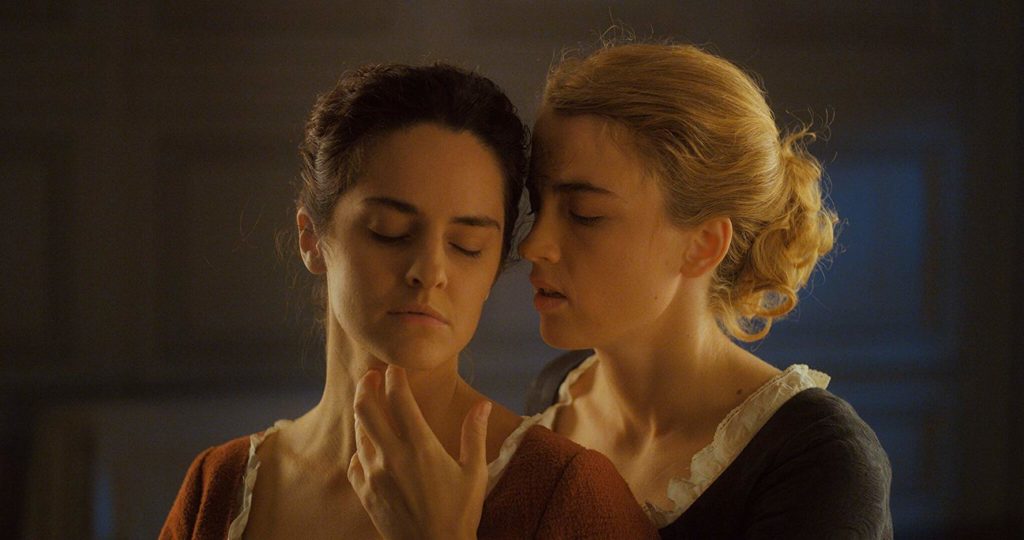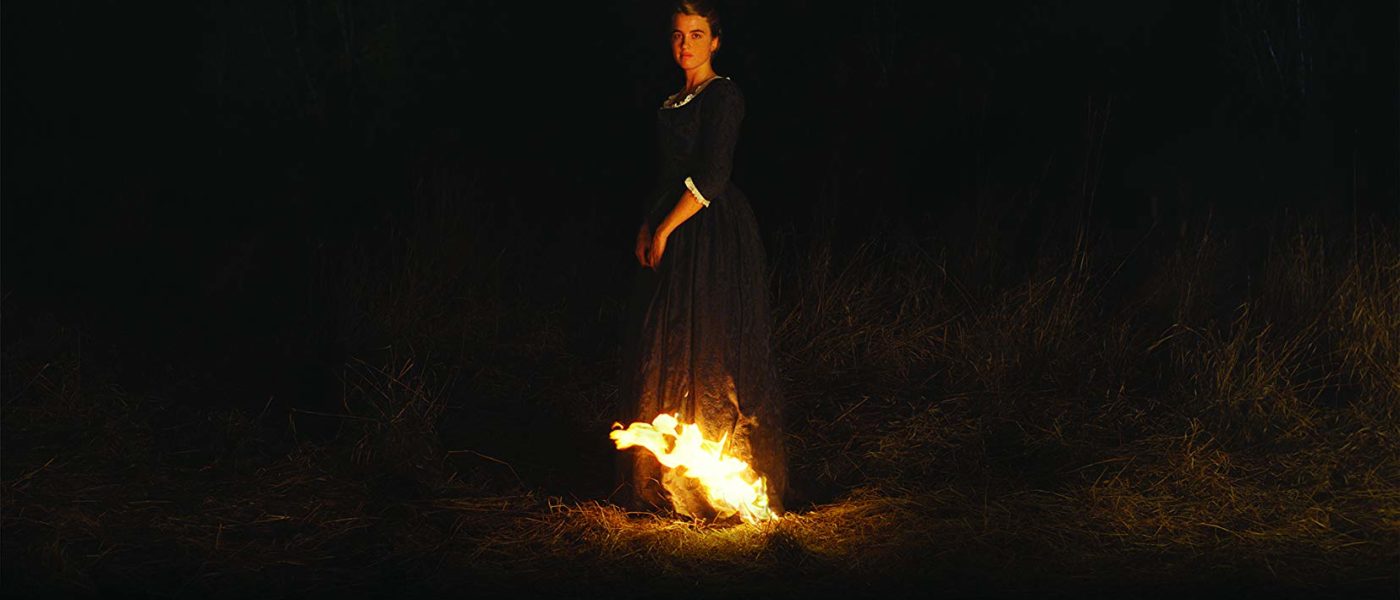A Compelling Tale of Love, Art, and All the Struggles They Bring
WRITTEN AND DIRECTED BY CÉLINE SCIAMMA / 2019

It’s fair to say that my expectations for Céline Sciamma’s Portrait of a Lady on Fire were set very high. Sciamma’s movie dominated a lot of the “Best of 2019” lists of those critics lucky enough to have caught a screening of it last year. Word around was that Portrait wasn’t just a great movie for 2019, but it was a great movie, period. It was a perfect fusion of art and craft and it was a darn shame it wasn’t in wider release, so that more people could see it and attest to its power. Now, in the early weeks of 2020, it’s finally opening in my hometown and I get a chance to see it for myself and see if all of the buzz was warranted.
Turns out it was.
I don’t like using the term ‘masterpiece’ lightly- and honestly, I’m not going to here- but Portrait of a Lady on Fire is an exceptional film. Everything about it- the writing, the direction, the art direction, the cinematography, the editing, the costuming- everything is done here at the highest level.

Noémie Merlant plays a painter, Marianne, who is summoned to a lonely island off the coast of Brittany to paint a wedding portrait of the young Héloïse (Adèle Haenel, who worked with Sciamma previously in Water Lilies). Héloïse is engaged to marry a Milanese nobleman, but she clearly has no say in the matter and regards the upcoming nuptials with a great deal of sadness and anger. She drove off the last person hired to paint her by refusing to pose for him. Her mother (played by Valeria Golino, whom you might remember from Rain Man or the Hot Shots movies) is so worried that Héloïse’s headstrong attitude will do the same for Marianne, that she asks Marianne to hide the fact that she is there to paint a portrait, but rather has come to provide Héloïse with a walking companion.
Marianne does what she can, of course, but the portrait, resulting from furtive glances and half-observed candid moments doesn’t satisfy the artist one bit. If Marianne is to capture the truth of Héloïse, she will need to be open to her. And as the two young women grow closer, their bond begins to develop into something stronger and more passionate.

The movie is virtually a two-hander, with Merlant and Haenel acting either together or in isolation for most of the film. The two are more than capable of carrying the emotional weight of the film. Their love for each other grows slowly at first, but erupts in full force when Héloïse’s mother leaves for a few days. Merlant conveys Marianne’s simmering passions as she closely yet surreptitiously studies Héloïse’s face and body language. When the two attend a bonfire one night, the true depth of their feelings for one another become clear. Héloïse, who has been sullen and withdrawn up to this point, ignites (literally, as she is so intent on Marianne, she does not realize her dress has caught fire).
That image is what gives the movie its name, and it is featured prominently on the posters and other artwork advertising the film. But the whole movie is filled with indelible imagery that lingers with you long after you have watched it: Marianne struggling with her gear as she carries it up the beach towards the castle; Héloïse running towards the cliffs, or disappearing beneath the waves on her swim; a ghostly apparition; the two women embracing each other in the morning light; and so on. Claire Mathon is the cinematographer. She also photographed 2019’s wonderful Atlantics for Mati Diop. She takes full advantage of the digital camera’s low-light sensitivity that allows her to shoot with mostly natural light. In many scenes, that means light from fireplaces and candles.

Beyond the theme of an awakening desire, Portrait is mostly concerned with the struggle of creating art that speaks to the truth of its subject. It’s not just focused on painting. There are discussions about music and storytelling (in the form of the myth of Orpheus). As a filmmaker, Sciamma no doubt finds herself faced with these same struggles in the creation of her own art. How do you capture the totality of something in any medium that is inherently limited? Can music really convey the sensation of a cloud of buzzing insects? Can a painting really reveal the soul of its subject? Does a story really speak to the truth of people’s lives? Of course, in the hands of great musicians, painters, and storytellers. And in Sciamma’s hands, Portrait of a Lady on Fire is a great film.


